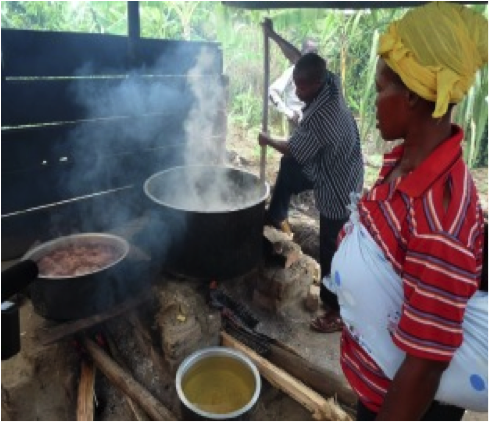Normally when people talk about global health and, more specifically, environmental health, they tend to focus on the big, flashy threats – floods, droughts, and toxic waste pollution, to name a few. But sometimes the most innocent and hidden/silent of activities can cause the greatest harm.
For the greater part of my life, especially my life in Uganda, I have been touched by how health related effects caused by the traditional (crude) cooking technologies used among the rural folks are taking away our innocent people. In fact, Uganda derives over 90% of its energy needs from biomass – mainly firewood and charcoal. An estimated forest surface of 115 football fields is used for cooking every day – either in the form of firewood or charcoal. Biomass resources are constantly being reduced because people are not replenishing the cut down trees. This will also support increased environment degradation, accelerating global warming, the rate of desertification and subsequently their related health effects. On a global perspective over 40% of the world’s population still burns various forms of biomass to cook – coal, wood, charcoal, and more. The smoke inhalation caused by burning these fuels results in nearly 4 million premature deaths each year, caused by a range of deadly chronic and acute health effects. Diseases like child pneumonia, lung cancer, chronic obstructive pulmonary disease, and heart disease plague communities in which mothers and children primarily are regularly exposed to cooking fumes. When you add all those deaths up, a simple act like cooking dinner becomes the fourth greatest risk factor for disease in developing countries.
Traditional/crude cooking technology in one of the primary schools in remote/rural Uganda.
Improved cooking technology at the same primary school.
Photos provided by; Edward Otim, Program manager/Global Health Corps fellow at USAID-SDS Program.
In addition to these serious health effects, this method of cooking also has serious environmental implications. Traditional cooking fires and stoves are highly inefficient and contribute significantly to the rapid depletion of local natural resources in these areas. This depletion can contribute to climate change thus posing significant health effects including irregular water supply and malaria out breaks as a result of flash floods. Subsequently, this forces rural and impoverished families to resort to drinking the dirty, sediment and parasite laden water that sits in puddles and small pools on the surface of the earth.
The great thing is that there is an incredibly easy solution. Cleaner stoves and high-efficiency stoves as indicated in the above photo are cheap and available to families across the world. The adoption of these cleaner stoves will not only save millions of lives a year, but will also reduce the risk of natural resource depletion and its associated health consequences.
In the meantime, families can work to transition their cooking environments to cleaner and healthier areas by using chimneys, insulated heat cookers, increasing indoor ventilation, and cooking outdoors. While these simple solutions won’t solve every problem, they are an important step towards protecting those in need.
If we are to concretely ensure that global health equity is achieved by all, we should start to re-channel a greater percentage of our efforts to these so called “innocent” and “silent” activities that are eroding a big part of our populace rather than investing all of our focus on the rather obvious causes.


